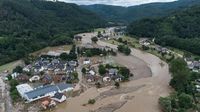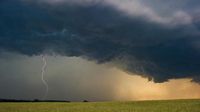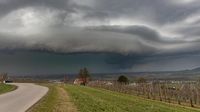Germany has launched a new digital platform aimed at enhancing public awareness and preparedness for natural hazards and extreme weather events. The Naturgefahrenportal (Natural Hazards Portal), developed by the German Weather Service (DWD), was officially unveiled on April 11, 2025, in Offenbach, marking a significant step towards proactive disaster management.
Federal Digital Minister Volker Wissing emphasized the portal's importance, stating, "With the Naturgefahrenportal, the precise question can be answered: Am I endangered with my house or at the place where I am? This makes life in Germany safer." His comments reflect a growing recognition of the need for reliable information in the face of increasing climate-related threats.
The portal consolidates various data sources, integrating real-time weather warnings, scientific analyses, and forecasts into a single user-friendly platform. DWD President Sarah Jones highlighted that the portal is designed not just to provide information, but to make it easily understandable, stating, "It makes information not only easily accessible but also prepares it in a comprehensible way."
Initially, the focus of the Naturgefahrenportal is on hydrological hazards, including floods and storm surges. However, future expansions are planned to cover a wider range of natural hazards, such as wildfires, droughts, avalanches, and earthquakes. This comprehensive approach aims to equip citizens with the knowledge they need to make informed decisions during emergencies.
The portal features an interactive map that allows users to view current warnings in various color-coded categories. Users can customize their warning preferences and search for specific locations. Under the "Vorsorgen und Handeln" (Prepare and Act) section, the portal provides actionable advice tailored to different scenarios, including preparations for impending dangers and specific tips for flood situations.
While the portal does not offer push notifications, which some critics have pointed out as a significant limitation, it does direct users to existing apps like the NINA app from the Federal Office for Civil Protection and Disaster Assistance (BBK) for real-time alerts. The DWD has stated that the integration of push notifications was avoided to prevent confusion among users.
Developed in close collaboration with federal and state governments, the Naturgefahrenportal aims to foster a sense of personal responsibility among citizens regarding disaster preparedness. Saarland Environment Minister Petra Berg noted, "It also contributes to raising public awareness and thus strengthening personal responsibility."
The portal's launch comes in the wake of the devastating flood disaster in the Ahrtal region in July 2021, which resulted in the loss of 184 lives and left hundreds injured. The tragedy underscored the urgent need for effective warning systems and reliable information to help communities respond to natural disasters.
As part of its commitment to continuous improvement, the DWD plans to expand the portal's capabilities to include more natural hazards and enhance user experience. The integration of artificial intelligence is also being considered to improve forecasting accuracy in the future.
Despite the positive reception of the portal, some residents of the Ahrtal region have expressed skepticism about its effectiveness. Reiner Friedsam, a local activist, criticized the lengthy development process, stating, "Now, four years after the disaster, emergency measures are to be implemented under political pressure." He questioned the portal's practical utility for residents, arguing that basic advice like using sandbags is insufficient in the face of extreme weather events.
Nonetheless, the DWD maintains that the portal is a crucial step forward in disaster management. Bodo Erhardt, who led the portal's development, remarked, "The approach behind it is new. Until now, information on various natural hazards was relatively scattered. This new website is a consolidated access point for information about natural hazards."
The Naturgefahrenportal is accessible online at www.naturgefahrenportal.de, and users are encouraged to utilize its resources to enhance their preparedness for extreme weather events. As climate change continues to increase the frequency and intensity of such events, platforms like this will play an essential role in safeguarding communities across Germany.
In summary, the launch of the Naturgefahrenportal represents a significant advancement in how Germany addresses natural hazards. By providing a centralized source of information and recommendations, the portal aims to empower citizens to take proactive measures in the face of potential threats. As the country grapples with the realities of climate change, tools like these will be vital in ensuring public safety and resilience.









